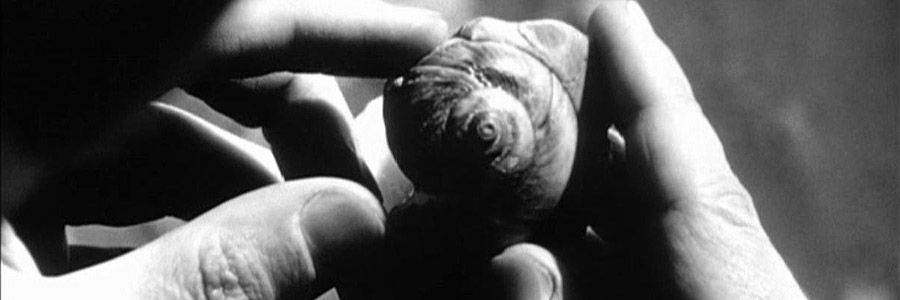
Pi
Artisan Entertainment
Original release: July 10th, 1998
Running time: 83 minutes
Writer and director: Darren Aronofsky
Composer: Clint Mansell
Cast: Sean Gullette
Max restates his assumptions: 00:02:52 to 00:04:40
Deconstructing Cinema: One Scene At A Time, the complete series so far
From the swirling galaxies deep in the furthest regions of space to the atoms we find beneath the lens of a telescope… We find it there and everywhere in between; it’s all around us.
If you believe that patterns exist everywhere in nature; that things are not as random as they first appear, then there are one of two likely outcomes of this realisation. The first is that you might become prone to looking for them where none might exist. The second is you might accept it is as it is and move on with the business of life.
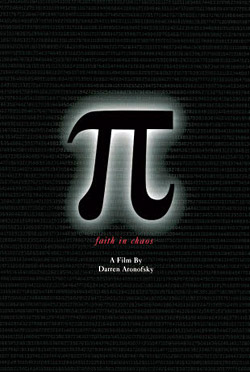
I’ve always been somewhere in the latter category, feeling life is too short and filled with enough moments and opportunities without the need to unravel each and every mystery. In other words, there are times when I’m simply content to enjoy the ride.
Yet for others, this is not the case, and in Darren Aronofsky’s directorial debut, Pi, this is all too clear when we meet Max Cohen (Sean Gullette).
While comparisons have been made between Pi and films such as David Lynch’s Eraserhead (1977) and David Cronenberg’s Videodrome (1983), I’ve always felt it had its own distinctive feel and look. It weaves together a plot which at first seems mighty complicated, gritty and claustrophobic but there are times when it also reminds me of Franz Kafka’s Metamorphosis, but Aronofsky hints at another influence during his writing.
With a brilliant mind when it comes to numbers, Max believes that everything in nature can be understood through them and this is an idea he lays out for us in the first few minutes of the film.
Employing the use of SnorriCam, Aronofsky shoots Gullette walking through the busy streets of New York as his character, Max, restates his assumptions.
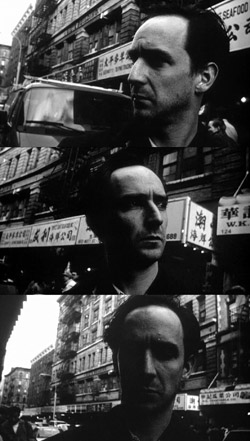
Two. Everything around us can be understood and represented through numbers.
Three. If you graph the numbers of any system, patterns emerge.
Therefore, there are patterns everywhere in nature.”
Max then sits on a bench in the park and as he watches the wind blowing the branches of a tree, he goes on give some examples of where we can find patterns in nature.
The cycling of disease epidemics; the wax and wane of caribou populations; sun spot cycles; the rise and fall of the Nile.”
This then brings us to the crux of the film and what it’s all about. As the camera closes in on the swaying branches with its leaves blowing to and fro, the image begins to dissolve. It’s inter-cut with a close up of his eyes and gradually a new image appears – a stock exchange ticker. We’re now inside Max’s apartment.
My hypothesis: Within the stock market there is a pattern as well… Right in front of me, hiding behind the numbers. Always has been.”
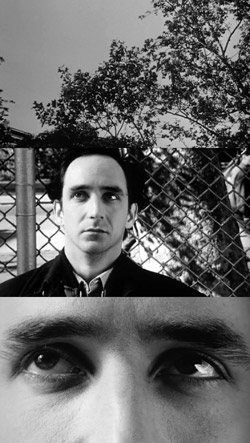
When Max begins working on finding stock market patterns, his home-built super-computer, Euclid, crashes after printing out a random 216-digit number.
Eventually he realises he’s stumbled onto something big and it’s not long before a group of Hasidic Jews, along with some guys from a Wall Street firm, want the numbers. While one group believes it to be the true name of God, the other believes it to be the key to wealth beyond their wildest dreams and each will do just about anything to get it.
Could there be a mathematical equation that simplifies the universe and everything in and outside of it with a sequence of numbers? Maybe a so-called “Unified Theory” that seeks to unite Albert Einstein’s Theory of Relativity with Quantum Theory? But that such a complex calculation is even possible is still the subject of enormous controversy.
And what of the Fibonacci sequence and the golden ratio, what part would they play in all of this? The questions are as endlessly complex as they are fascinating, on one end dipping into the densest areas of physics, numerology and theology and the other end with works of popular fiction and films such as The Da Vinci Code making it all seem to outlandish to even entertain the possibility of such a thing.
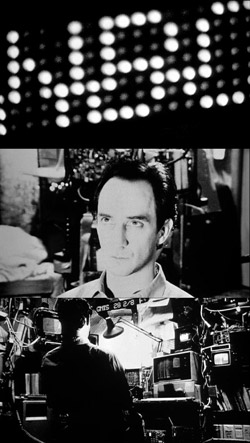
Still, the pursuit to unravel the mysteries of everything through 3.14159 is what drives people like Max, the Hasidic Jews, the guys from the Wall Street firm and so many others.
With everyone clamouring to get inside his head, Max seems to have a few bugs crawling around in there as well. Like Euclid, both are capable of storing and calculating vast sums but they are also prone to crashing. Like Icarus who flew too close to the sun and got his wings burned, Max eventually sees everything but at what cost to himself?
- Gaffney, P (2010) The Force of the Virtual: Deleuze, Science, and Philosophy, University of Minnesota Press ¹
- McGowan, T., Kunkle, S. (2004) Lacan and Contemporary Film, Other Press LLC ²
- Coates, P. (2003) Cinema, Religion, and the Romantic Legacy, Ashgate Publishing Limited ³
Solving the secrets to both Pi and the stock market is like the would-be alchemist trying to turn water into wine or metal into gold. They’re both highly complex systems that are hard to analyse. Although after decades of technological advancements and centuries of stock trading it should be possible, but what will we do once we know all the answers?

Patrick Samuel
The founder of Static Mass Emporium and one of its Editors in Chief is an emerging artist with a philosophy degree, working primarily with pastels and graphite pencils, but he also enjoys experimenting with water colours, acrylics, glass and oil paints.
Being on the autistic spectrum with Asperger’s Syndrome, he is stimulated by bold, contrasting colours, intricate details, multiple textures, and varying shades of light and dark. Patrick's work extends to sound and video, and when not drawing or painting, he can be found working on projects he shares online with his followers.
Patrick returned to drawing and painting after a prolonged break in December 2016 as part of his daily art therapy, and is now making the transition to being a full-time artist. As a spokesperson for autism awareness, he also gives talks and presentations on the benefits of creative therapy.
Static Mass is where he lives his passion for film and writing about it. A fan of film classics, documentaries and science fiction, Patrick prefers films with an impeccable way of storytelling that reflect on the human condition.
© 2022 STATIC MASS EMPORIUM . All Rights Reserved. Powered by METATEMPUS | creative.timeless.personal. | DISCLAIMER, TERMS & CONDITIONS
HOME | ABOUT | CONTACT | TWITTER | GOOGLE+ | FACEBOOK | TUMBLR | YOUTUBE | RSS FEED
CINEMA REVIEWS | BLU-RAY & DVD | THE EMPORIUM | DOCUMENTARIES | WORLD CINEMA | CULT MOVIES | INDIAN CINEMA | EARLY CINEMA
MOVIE CLASSICS | DECONSTRUCTING CINEMA | SOUNDTRACKS | INTERVIEWS | THE DIRECTOR’S CHAIR | JAPANESE CINEMA





